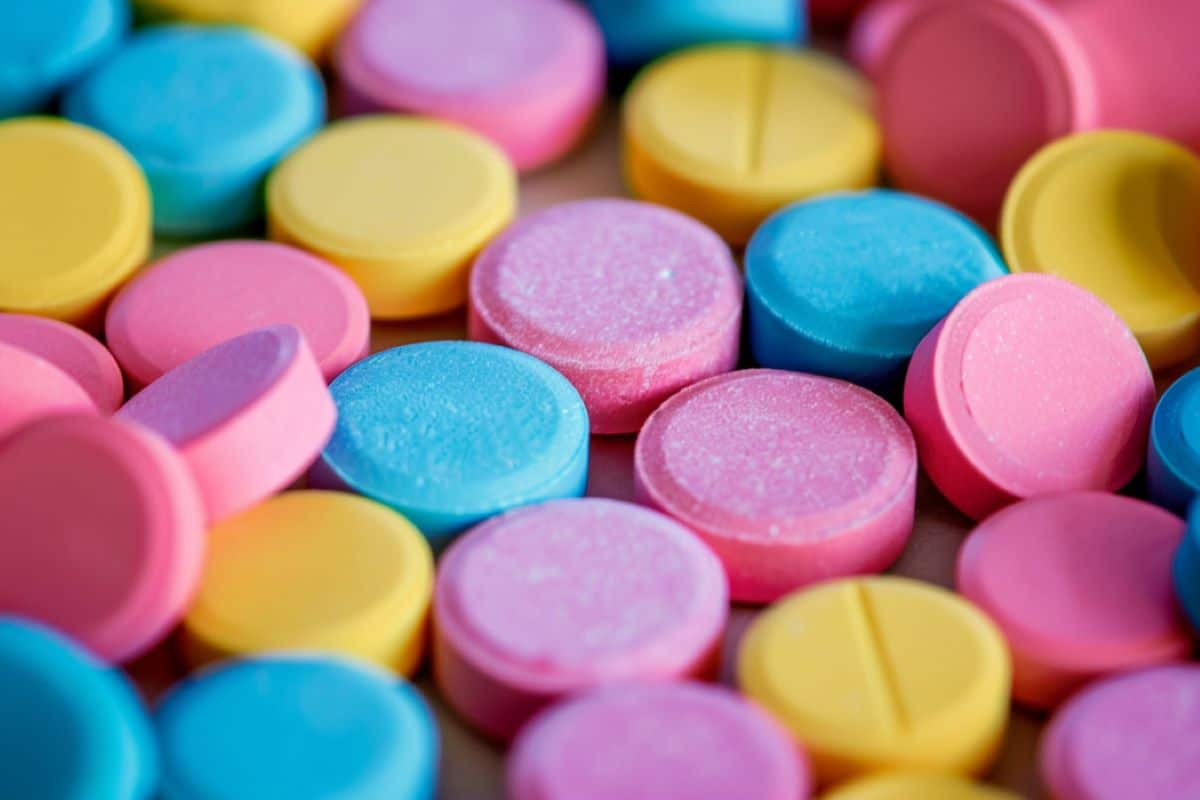Summary: Researchers developed three new MDMA variants (ODMA, TDMA, and SeDMA) that retain the therapeutic benefits while reducing side effects. These compounds affect mood-regulating brain structures similarly to MDMA but have fewer toxic breakdown products and lower interaction with serotonin receptors.
The study suggests these variants could make psychotherapeutic use of MDMA safer. Further research is needed to confirm their efficacy and safety.
Key Facts:
- Safer Variants: New MDMA analogs (ODMA, TDMA, SeDMA) reduce side effects.
- Positive Effects Retained: Similar impact on mood regulation without severe toxic breakdown.
- Potential for Therapy: Could advance the use of MDMA in treating mental illnesses like PTSD.
Source: Medical University of Vienna
The use of the active ingredient 3,4-methylenedioxy-N-methylamphetamine (MDMA), commonly known as “ecstasy”, to support psychotherapy for mental illnesses such as post-traumatic stress disorder is being discussed worldwide.
While the therapeutic potential of the substance has already been investigated in clinical trials, only Australia and New Zealand have so far decided to approve and restrict its controlled use by experts due to possible risks and side effects.
An international research team led by MedUni Vienna has now identified three new variants of MDMA as promising alternatives for safer use in a controlled psychotherapeutic setting as part of a study.
The results were recently published in the Journal of Neurochemistry.
The currently developed MDMA variants (ODMA, TDMA and SeDMA) have been modified by the researchers in such a way that the positive effects are retained and the negative effects are reduced.
As the studies carried out on human cell cultures by Harald Sitte’s team from MedUni Vienna’s Center for Physiology and Pharmacology show, the new chemical compounds have a similar effect to MDMA on the relevant clinical target structures in the brain (such as serotonin, dopamine and noradrenaline transporters), which are crucial for regulating mood and emotion.
In contrast to MDMA, however, the new substances have lower activity at certain serotonin receptors and are also broken down more favorably, resulting in fewer toxic breakdown products: “This allows the conclusion that both the acute and long-term side effects of ODMA, TDMA and SeDMA may be lower than those of the conventional substance,” explains study leader Harald Sitte.
“Since the MDMA analogs also have a weaker interaction with certain transport proteins in the body that are responsible for the absorption and excretion of drugs, the risk of interactions with other drugs could also be reduced,” adds the first author of the study, Ana Sofia Alberto-Silva from MedUni Vienna’s Center for Physiology and Pharmacology.
Further studies needed
The psychoactive substance MDMA (3,4-methylenedioxy-N-methylamphetamine) has been known as the party drug “ecstasy” since the 1980s – although the first patent for the substance was granted back in 1912.
Due to its effect of promoting positive emotions and increasing interpersonal empathy, research in recent years has focused on the potential of MDMA to support psychotherapy for various mental illnesses. However, possible risks and side effects (tachycardia, high blood pressure, liver and nerve damage) have so far been an obstacle to its widespread therapeutic use.
The MDMA analogs currently identified may provide promising alternatives: “Our experimental results showed that the new variants can retain the therapeutic potential of the conventional substance, but are likely to cause fewer side effects.”
Harald Sitte summarizes the significance of the results: “This could advance the controlled use of psychoactive substances in neuropsychiatric illness”.
At the same time, the psychopharmacologist and addiction researcher emphasizes the need for further studies to comprehensively test the efficacy and safety of MDMA variants for use in a psychotherapeutic setting, for example in the treatment of post-traumatic stress disorder.
About this psychopharmacology research news
Author: Karin Kirschbichler
Source: Medical University of Vienna
Contact: Karin Kirschbichler – Medical University of Vienna
Image: The image is credited to Neuroscience News
Original Research: Open access.
“Bioisosteric analogs of MDMA: Improving the pharmacological profile?” by Harald Sitte et al. Journal of Neurochemistry
Abstract
Bioisosteric analogs of MDMA: Improving the pharmacological profile?
3,4-Methylenedioxymethamphetamine (MDMA, ‘ecstasy’) is re-emerging in clinical settings as a candidate for the treatment of specific neuropsychiatric disorders (e.g. post-traumatic stress disorder) in combination with psychotherapy.
MDMA is a psychoactive drug, typically regarded as an empathogen or entactogen, which leads to transporter-mediated monoamine release.
Despite its therapeutic potential, MDMA can induce dose-, individual-, and context-dependent untoward effects outside safe settings.
In this study, we investigated whether three new methylenedioxy bioisosteres of MDMA improve its off-target profile. In vitro methods included radiotracer assays, transporter electrophysiology, bioluminescence resonance energy transfer and fluorescence-based assays, pooled human liver microsome/S9 fraction incubations, metabolic stability studies, isozyme mapping, and liquid chromatography coupled to high-resolution mass spectrometry. In silico methods included molecular docking.
Compared with MDMA, all three MDMA bioisosteres (ODMA, TDMA, and SeDMA) showed similar pharmacological activity at human serotonin, dopamine, and norepinephrine transporters (hSERT, hDAT, and hNET, respectively) but decreased agonist activity at 5-HT2A/2B/2C receptors.
Regarding their hepatic metabolism, they differed from MDMA, with N-demethylation being the only metabolic route shared, and without forming phase II metabolites. In addition, TDMA showed an enhanced intrinsic clearance in comparison to its congeners.
Additional screening for their interaction with human organic cation transporters (hOCTs) and plasma membrane monoamine transporter (hPMAT) revealed a weaker interaction of the MDMA analogs with hOCT1, hOCT2, and hPMAT.
Our findings suggest that these new MDMA bioisosteres might constitute appealing therapeutic alternatives to MDMA, sparing the primary pharmacological activity at hSERT, hDAT, and hNET, but displaying a reduced activity at 5-HT2A/2B/2C receptors and alternative hepatic metabolism.
Whether these MDMA bioisosteres may pose lower risk alternatives to the clinically re-emerging MDMA warrants further studies.







